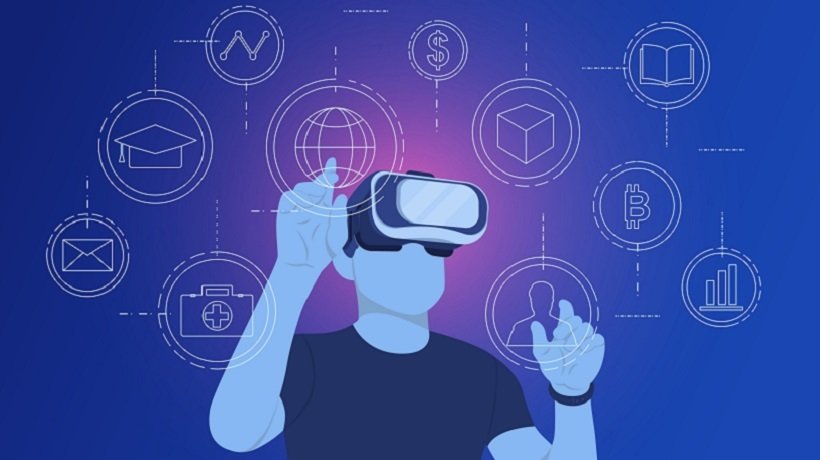Is A Metaverse Classroom A Good Idea?
More and more educational facilities have decided to incorporate Virtual Reality (VR) into the learning process. However, with the creation of the metaverse, a conversation has started about whether a classroom within it, completely virtual, would be beneficial. The metaverse is a collective space where people can interact and participate in a shared virtual experience, which gives teachers and students the ability to interact, work together, and learn in a simulated environment. No one can deny that a metaverse classroom offers a new way to approach education. However, while it allows for immersive, interactive learning experiences that go beyond the traditional classroom settings, is it really good for the future of education? In this article, you'll read about the pros and cons of metaverse-based instruction.
Benefits Of A Classroom In The Metaverse
Engaging Lessons
Virtual classrooms offer an engaging, hands-on experience where students can actively participate in simulations, explore new concepts, and collaborate with peers in real time. This increases information retention, as well as the understanding of the subject matter. Lessons in the metaverse are more dynamic, which helps keep students' attention and interest as they explore the topic firsthand. They have the power to actively engage in the lesson rather than passively receive information.
More Opportunities
Imagine the possibilities if you had the chance to study anything you want in the world. Want to become an astronaut, but your country's universities or colleges can't provide you with that option? In a metaverse-filled future, you could easily enroll in a virtual school that unlocks every opportunity. Also, lessons in the metaverse can give students the chance to live in scenarios that aren't feasible in the physical world, like visiting historical sites or exploring scientific concepts in a laboratory setting. This type of experiential learning can help students develop critical thinking and problem-solving skills.
No Geographical Barrier
In the metaverse, there aren't any barriers to stop you from attending school in another region or country. The virtual environment helps students and teachers collaborate in virtual lessons from anywhere in the world. This doesn't require anyone's physical presence and makes education more accessible, particularly for those who live in isolated regions. Everyone can have equal access to the same quality of education as people living in urban areas. Additionally, the metaverse classroom can provide cross-cultural exchange and collaboration.
Limitless Experience For Teachers
A metaverse classroom can benefit teachers, too. Apart from breaking down the geographical barriers mentioned above, it can offer them an instructional experience with no limits. First of all, it provides flexibility for educators to create their virtual environment according to their needs and teaching style. They can also collaborate with other educators from around the globe, sharing ideas and tips. Also, the data analysis helps them assess their students' performance and improve their teaching. Furthermore, in a metaverse classroom, teachers have the ability to use their imagination to create unique learning material.
Meaningful Learning Experience
A metaverse classroom can use Artificial Intelligence to personalize the learning experience for each student. This makes their educational journey more meaningful and relatable. Also, the virtual classroom can provide them with a customized curriculum that's tailored to their individual gaps and preferences. The metaverse can address the age-old question of "What's in it for me?" by providing every learner with a memorable and meaningful training path.
Self-Expression
The virtual classroom metaverse lets its users represent themselves through avatars. Those avatars allow students to express their individuality and personal style. This can be especially helpful for students who may not feel comfortable speaking up or collaborating with peers in a traditional classroom setting.
Drawbacks Of A Metaverse Classroom
Technical Problems
Not everything is idyllic, though; at least not when it comes to technology. Creating a metaverse classroom comes with a variety of technical challenges. First of all, there may be problems with bandwidth and connectivity since the metaverse requires a high-speed and stable internet connection. Then, there are certain hardware requirements, such as a powerful graphics card, VR headsets, and/or other equipment. This can be challenging for some students who may not have access to all of the above. Lastly, a metaverse classroom may need to integrate with existing educational systems, like Learning Management Systems, to support student assessment and tracking.
More Costly
Several factors make a metaverse classroom more costly than a traditional one. For a start, there are development and hardware costs to consider. Developing a virtual classroom requires technical expertise and investment in hardware, software, simulations, and a stable network infrastructure. The other option is to hire an outsourcing partner who already knows the ins and outs. Also, a virtual environment needs ongoing maintenance and support to function properly.
Possibly Addictive
The metaverse's immersive nature makes it feel real, leading some people to spend more time in it than they should. This could result in them neglecting the physical world and all of its responsibilities. On top of that, some virtual classrooms might incorporate elements of gamification, like rewards, which can encourage addictive behaviors if not implemented correctly. The sense of goal accomplishments can be highly motivating, which is a double-edged sword in this case.
Safety Issues
As with any online platform, a metaverse classroom needs to be secure and protect users' personal information. Cybersecurity threats such as hacking, identity theft, and data breaches are real concerns that need to be addressed and taken care of immediately. Additionally, content moderation is essential. Though it may be challenging to control the content that students access, share, or create, it's of vital importance since it can expose learners to inappropriate, offensive, or harmful material.
Conclusion
A virtual classroom in the metaverse can offer many benefits, including a more dynamic and engaging learning environment. However, it's important to weigh the potential pros and cons, then approach your virtual learning design with a balanced perspective. Whether a metaverse classroom is a viable idea in the long term is a subjective decision but, as is the case with most things in the world of eLearning, the outcomes greatly depend on your implementation and tech tools of choice.
Looking for more immersive learning insights? Check out our eLearning Trailblazers list, which features leading experts in AR, VR, and Mixed Reality.









